 W
WAlbert Savarus is an 1842 novel by French novelist and playwright Honoré de Balzac (1799–1850) and included in his series of novels known as La Comédie humaine which parodies and depicts French society in the period of the Restoration and the July Monarchy (1815–1848).
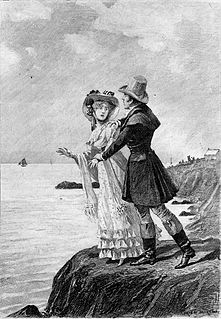 W
WBéatrix is an 1839 novel by French author Honoré de Balzac (1799–1850) and included in the Scènes de la vie privée section of his novel sequence La Comédie humaine.
 W
WLe Cabinet des Antiques is a French novel published by Honoré de Balzac in 1838 under the title les Rivalités en province in le Constitutionnel, then published as a work in its own right in 1838 by the Souverain publishing house.
 W
WHistoire de la grandeur et de la décadence de César Birotteau or César Birotteau, is an 1837 novel by Honoré de Balzac, and is one of the Scènes de la vie parisienne in the series La Comédie humaine. Its main character is a Parisian perfumer who achieves success in the cosmetics business, but becomes bankrupt due to property speculation.
 W
WLes Chouans is an 1829 novel by French novelist and playwright Honoré de Balzac (1799–1850) and included in the Scènes de la vie militaire section of his novel sequence La Comédie humaine. Set in the French region of Brittany, the novel combines military history with a love story between the aristocratic Marie de Verneuil and the Chouan royalist Alphonse de Montauran. It takes place during the 1799 post-war uprising in Fougères.
 W
WLe Contrat de mariage is an 1835 novel by French author Honoré de Balzac (1799-1850) and included in the Scènes de la vie privée section of his novel sequence La Comédie humaine. Set in Bordeaux, it describes the marriage of a Parisian gentleman, Paul de Manerville, to the beautiful but spoiled Spanish heiress, Natalie Evangelista.
 W
WLe Cousin Pons is one of the last of the 94 novels and short stories that make up Honoré de Balzac’s Comédie humaine. Begun in 1846 as a novella, it was envisaged as one part of a diptych, Les Parents pauvres, along with La Cousine Bette. The book was originally published as a serial in Le Constitutionnel, but during 1847 it grew into a full-length novel, with a male poor relation, Pons, as its subject,
 W
WLa Cousine Bette is an 1846 novel by French author Honoré de Balzac. Set in mid-19th-century Paris, it tells the story of an unmarried middle-aged woman who plots the destruction of her extended family. Bette works with Valérie Marneffe, an unhappily married young lady, to seduce and torment a series of men. One of these is Baron Hector Hulot, husband to Bette's cousin Adeline. He sacrifices his family's fortune and good name to please Valérie, who leaves him for a well-off merchant named Crevel. The book is part of the Scènes de la vie parisienne section of Balzac's novel sequence La Comédie humaine.
 W
WLe Curé de village is a novel by Honoré de Balzac. It first appeared in La Presse in 1839. Frequently revised, the edited text was published as a separate volume in 1841. It covers themes that Balzac had already developed in le Médecin de campagne - improvements to living conditions in rural areas and redemption through self-sacrifice. It was first conceived as a detective novel and includes a mysterious death, with the attitude of its main character Véronique Graslin remaining mysterious until the end of the book.
 W
WUn début dans la vie is a novel by the French writer Honoré de Balzac. It is the sixth of the Scènes de la vie privée in La Comédie humaine.
 W
WLa Duchesse de Langeais is an 1834 novel by French author Honoré de Balzac (1799-1850) and included in the Scènes de la vie parisienne section of his novel sequence La Comédie humaine. It is part of his 1839 trilogy Histoire des treize: Ferragus is the first part, Part Two is La Duchesse de Langeais and Part Three is The Girl with the Golden Eyes. It first appeared in 1834 under the title Ne touchez pas la hache in the periodical L'Écho de la Jeune France.
 W
WEugénie Grandet is a novel first published in 1833 by French author Honoré de Balzac. While he was writing it he conceived his ambitious project, The Human Comedy, and almost immediately prepared a second edition, revising the names of some of the characters so that Eugénie Grandet then fitted into the section: Scenes from provincial life in the Comédie. He dedicated the edition to Maria Du Fresnay, who was then his lover and was the mother of his daughter, Marie-Caroline Du Fresnay.
 W
WLa Fausse Maîtresse is an 1843 novel by French novelist and playwright Honoré de Balzac (1799-1850) and included in his series of novels known as La Comédie humaine which parodies and depicts French society in the period of the Restoration and the July Monarchy (1815-1848). The plot is subtle and complex, and the true explanation is carefully hidden until the end of the book.
 W
WFerragus is an 1833 novel by French author Honoré de Balzac (1799–1850) and included in the Scènes de la vie parisienne section of his novel sequence La Comédie humaine. It is part of his trilogy Histoire des treize: Ferragus is the first part, the second is La Duchesse de Langeais and the third is The Girl with the Golden Eyes. Ferragus first appeared in the Revue de Paris and was then published by the firm Charles-Béchet.
 W
WHonorine is an 1843 novel by French novelist and playwright Honoré de Balzac (1799-1850) and included in his series of novels known as La Comédie humaine which parodies and depicts French society in the period of the Restoration and the July Monarchy (1815-1848). Balzac has a subtle way of approaching his plot indirectly and embedding a story within a story. The story is perhaps a common one of a wife trapped in a marriage, but is approached in an interesting manner.
 W
WIllusions perdues — in English, Lost Illusions — is a serial novel written by the French writer Honoré de Balzac between 1837 and 1843. It consists of three parts, starting in provincial France, thereafter moving to Paris, and finally returning to the provinces. Thus it resembles another of Balzac's greatest novels, La Rabouilleuse, in that it is set partly in Paris and partly in the provinces. It is, however, unique among the novels and short stories of La Comédie humaine by virtue of the even-handedness with which it treats both geographical dimensions of French social life.
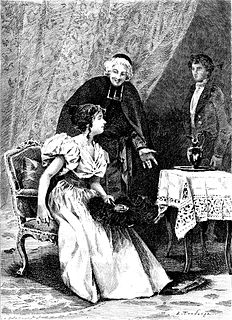 W
WLouis Lambert is an 1832 novel by French novelist and playwright Honoré de Balzac (1799–1850), included in the Études philosophiques section of his novel sequence La Comédie humaine. Set mostly in a school at Vendôme, it examines the life and theories of a boy genius fascinated by the Swedish philosopher Emanuel Swedenborg (1688–1772).
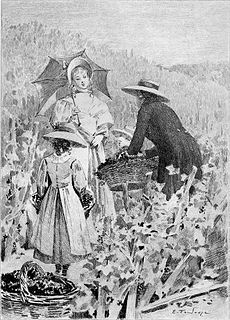 W
WLe Lys dans la Vallée is an 1835 novel about love and society by French novelist and playwright Honoré de Balzac (1799–1850). It concerns the affection — emotionally vibrant but never consummated — between Félix de Vandenesse and Henriette de Mortsauf. It is part of his series of novels known as La Comédie humaine, which parodies and depicts French society in the period of the Bourbon Restoration and the July Monarchy (1815–1848). In his novel he also mentions the château Azay-le-Rideau, which can still be visited today.
 W
WLa Maison du chat-qui-pelote is a novel by Honoré de Balzac. It is the opening work in the Scènes de la vie privée, which comprises the first volume of Balzac's La Comédie humaine.
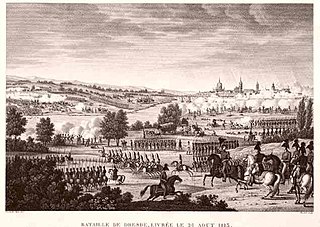 W
WLe Médecin de campagne is an 1833 novel by Honoré de Balzac. The second in his Scène de la vie de campagne series, it addresses the author's preoccupations with social organisation, political power and religion, though Balzac's own political principles were not those of the character Dr Benassis. None of the characters appear elsewhere in La Comédie humaine.
 W
WMémoires de deux jeunes mariées is an epistolary novel by the French writer Honoré de Balzac. It was serialized in the French newspaper La Presse in 1841 and published by Furne in 1842 as the first work in the second volume of Balzac's La Comédie humaine. It was dedicated to the French novelist George Sand. The first English translation of the novel appeared in 1902, with a preface by Henry James.
 W
WModeste Mignon is a novel by the French writer Honoré de Balzac. It is the fifth of the Scènes de la vie privée in La Comédie humaine.
 W
WLa Peau de chagrin, known in English as The Wild Ass's Skin is an 1831 novel by French novelist and playwright Honoré de Balzac (1799–1850). Set in early 19th-century Paris, it tells the story of a young man who finds a magic piece of shagreen that fulfills his every desire. For each wish granted, however, the skin shrinks and consumes a portion of his physical energy. La Peau de chagrin belongs to the Études philosophiques group of Balzac's sequence of novels, La Comédie humaine.
 W
WLe Père Goriot is an 1835 novel by French novelist and playwright Honoré de Balzac (1799–1850), included in the Scènes de la vie privée section of his novel sequence La Comédie humaine. Set in Paris in 1819, it follows the intertwined lives of three characters: the elderly doting Goriot, a mysterious criminal-in-hiding named Vautrin and a naive law student named Eugène de Rastignac.
 W
WLes Proscrits is a French novel by Honoré de Balzac, published in 1831 by éditions Gosselin, then in 1846 by Furne, Dubochet, Hetzel in Études philosophiques. He subtitled it an esquisse historique. It forms part of the Livre Mystique, as do Louis Lambert and Séraphîta, and shares several of the themes of Louis Lambert - doctor Sigier's theory that intelligence knows several avatars, from animal intelligence to angels' intelligence, and the idea that angels live among men, which often recurs in Balzacs' descriptions of women.
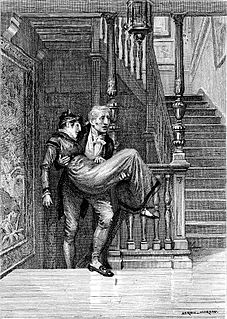 W
WThe Quest of the Absolute is a novel by Honoré de Balzac. The novel first appeared in 1834, with seven chapter-divisions, as a Scène de la vie privée; was published by itself in 1839 by Charpentier; and took its final place as a part of the Comédie in 1845.
 W
WLa Rabouilleuse is an 1842 novel by Honoré de Balzac, and is one of The Celibates in the series La Comédie humaine. The Black Sheep is the title of the English translation by Donald Adamson published by Penguin Classics. It tells the story of the Bridau family, trying to regain their lost inheritance after a series of mishaps.
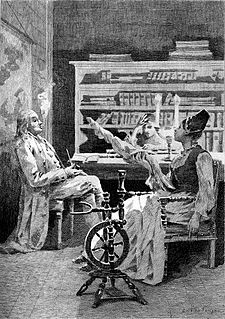 W
WSéraphîta is a French novel by Honoré de Balzac with themes of androgyny. It was published in the Revue de Paris in 1834. In contrast with the realism of most of the author's best known works, the story delves into the fantastic and the supernatural to illustrate philosophical themes.
 W
WHonoré de Balzac's Splendeurs et misères des courtisanes, translated either as The Splendors and Miseries of Courtesans or as A Harlot High and Low, was published in four parts from 1838 to 1847:Esther Happy What Love Costs an Old Man The End of Evil Ways The Last Incarnation of Vautrin
 W
WUne ténébreuse affaire is a novel by Honoré de Balzac, published in 1841. It was originally published in serial form in Le Journal du Commerce. It is one of the Scènes de la vie politique in La Comédie humaine.
 W
WUrsule Mirouët, an often overlooked novel, belongs to Honoré de Balzac’s great series of 94 novels and short stories La Comédie humaine. First published in 1841, it forms part of his Scènes de la vie de province.
 W
WLa Vendetta is a novel by the French writer Honoré de Balzac. It is the eighth of the Scènes de la vie privée in La Comédie humaine. The novel was first published in 1830 by Mame et Delaunay-Vallée. In 1842 it appeared in the first Furne edition of La Comédie humaine. La Vendetta was the fourth work in Volume 1, making it the fourth of the Scènes de la vie privée.
 W
WLa Vieille Fille is a novel by the French writer Honoré de Balzac. Written in 1836, it was first published as a serial in La Presse, then published by Edmond Werdet in 1837 in Études de mœurs, in the section les Scènes de la vie de province. La Vieille Fille was republished in 1839 by éditions Charpentier, before being published alongside le Cabinet des Antiques in the isolated les Rivalités group within Scènes de la vie de province in la Comédie humaine, published in 1844 by édition Furne.